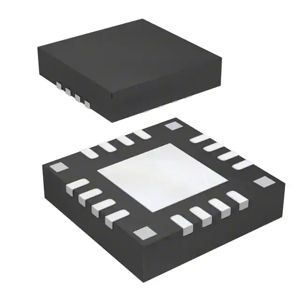
Motion Sensors - Accelerometers
Motion Sensors - Accelerometers: Precision in Motion Detection
Definition:
Motion Sensors - Accelerometers are specialized devices designed to measure acceleration forces, including static (gravity) and dynamic (movement or vibration) forces. These sensors are essential for detecting and analyzing motion in various applications, from consumer electronics to industrial systems. By converting mechanical motion into an electrical signal, accelerometers provide critical data for orientation, tilt, shock, and vibration detection.
Types of Motion Sensors - Accelerometers:
1. MEMS (Micro-Electro-Mechanical Systems) Accelerometers: Compact, low-power sensors widely used in smartphones, wearables, and IoT devices for motion tracking and gesture recognition.
2. Piezoelectric Accelerometers: Ideal for high-frequency vibration monitoring in industrial machinery, automotive testing, and aerospace applications.
3. Capacitive Accelerometers: Known for high accuracy and stability, commonly used in navigation systems, robotics, and medical devices.
4. Piezoresistive Accelerometers: Robust sensors capable of measuring high-impact forces, often applied in automotive crash testing and structural health monitoring.
Buying Recommendations:
When selecting an accelerometer, consider the following factors:
- Measurement Range: Choose a sensor that matches the expected acceleration levels (e.g., 2g for consumer devices vs. 500g for industrial impacts).
- Bandwidth: Ensure the sensor s frequency response aligns with your application (e.g., low-frequency for tilt sensing vs. high-frequency for vibration analysis).
- Output Type: Analog, digital (I2C/SPI), or wireless outputs should suit your system s integration requirements.
- Environmental Durability: For harsh environments, opt for models with robust enclosures and resistance to temperature, humidity, or shock.
Motion Sensors - Accelerometers are pivotal in enabling smart, responsive systems. Whether for innovation in consumer tech or precision in industrial automation, selecting the right accelerometer ensures optimal performance and reliability.
Filter and sort
Categories
PXLS63230AES
PSI5 PROTOCOL HIGH X 1 AXIS ACC
MMA5148LCWR2
ACCELEROMETER 480G PCM/SPI 16QFN
PXLS61322AESR2
XTRINSIC 2 AXIS MED/MED XY SPI32
PXLS82722AESR2
2 AXIS MED/MED YZ
PXLS63322AESR2
XTRINSIC 2 AXIS MED/MED XY ACCEL
PXLS63130AESR2
PSI5 PROTOCOL Z 1 AXIS ACCELERO
CXL10GP3
ACCELEROMETER 10G ANALOG
PXLS80722AESR2
2 AXIS MED/MED YZ
PXLS60220AESR2
XTRINSIC 1 AXIS ACCELEROMETER
PXLS70733AESR2
SENSOR ACCELEROMETER UTA P2.0
MMA5206LCWR2
ACCELEROMETER PSI5 16QFN
PXLS60311AES
XTRINSIC 2 AXIS LOW/LOW XY ACCEL
PXLS80333AESR2
2 AXIS HI/HI XY
KXCJB-1041
LOW HEIGHT TRI-AXIS, USER SELECT
PXLS61422AESR2
XTRINSIC 2 AXIS MED/MED XZ SPI32
FXLS8966AFR1
1AXIS 2/4/8/16G 2X2DFN10
PXLS60311AESR2
XTRINSIC 2 AXIS LOW/LOW XY ACCEL
820M1-6000-TRAY
ACCELEROMETER
PXLS63333AESR2
XTRINSIC 2 AXIS HIGH/HIGH XY PSI
PXLS84422AESR2
2 AXIS MED/MED XZ

